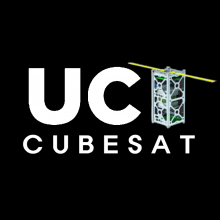CubeSat
BACKGROUND:
The CubeSat team at UCI is a student-led effort to launch a 2U nanosatellite into orbit to test two UCI research payloads. The satellite operates with five subsystems (Power/Payload, Communications, Avionics, Structures/Thermal, and Systems Engineering), in addition to housing two payloads. The first payload is a variable emissivity device (VED) that will be tested as a thermal regulator, and our job is to test its performance in various degrees of solar exposure and at varying adjustable emissivity values. Similar materials to the sample are hoped to be used as a cheap method of thermal management on future spacecraft. The second payload is in collaboration with the ASPIN lab at UCI. The satellite will carry a transceiver meant to function as a transmitter of a “signal of opportunity”, helpful in researching novel navigation methods in the absence of or in place of a traditional GPS signal.
OBJECTIVES:
- Ensure that payload requirements and mission objectives from payload stakeholders are all met
- Integrate components of various subsystems to collect data, manage power, and communicate with the groundstation
- Build and test a functional receiving groundstation
- Test the subsystems and CubeSat among operational and launch conditions
- Integrate and successfully launch the satellite
- Create thorough documentation and a foundation for future UCI orbital projects
SUBSYSTEMS:
Power/Payload: Includes the external solar panels, battery management system, and the battery itself, responsible for power collection and distribution throughout the satellite. This subteam is also mainly responsible for serving as the interface between the two external payload teams, and are responsible for developing and integrating test procedures for operation.
Communications: Receiving payload data and telemetry from all parts of the satellite and packaging into a transmittable form. Responsible for handling data uplink and downlink from the satellite, and developing the hardware and software to handle data communication within and from the satellite.
Avionics: Responsible for the central flight computer and main interfaces between other subsystems of the satellite. Also responsible for the attitude determination and control system (ADCS), which allows for orientation adjustment of the satellite in orbit to ensure optimal power collection and to comply with payload requirements.
Structures/Thermal: Responsible for creating all of the support structures and mechanisms within the satellite, and that all designs comply with space hardware guidelines and best practices. Also responsible for ensuring that all components remain within nominal operation temperatures; accounting for heat conservation and dissipation.
Systems: Ensures that all component and subsystem interfaces are well-defined and accounted for. Manages subsystem integration, critical project documentation; verifies mission requirements and payload stakeholders are satisfied.
CONTACT:
Project Lead: Adrian Osorio (osorioaj@uci.edu)

